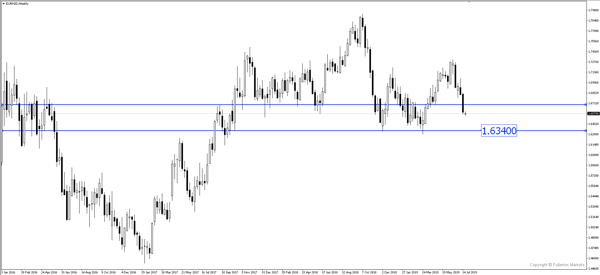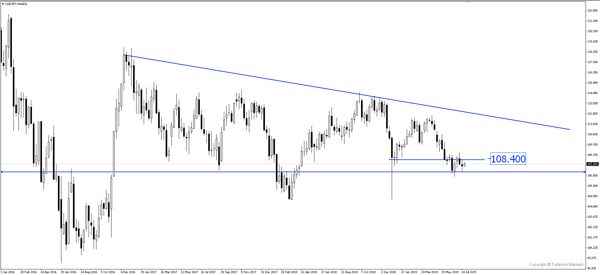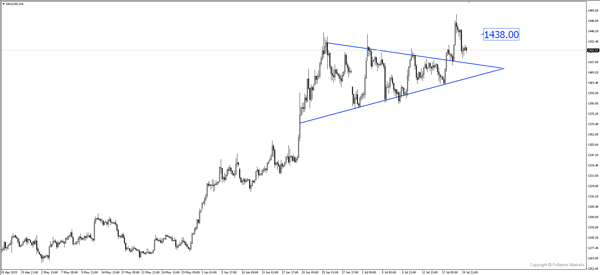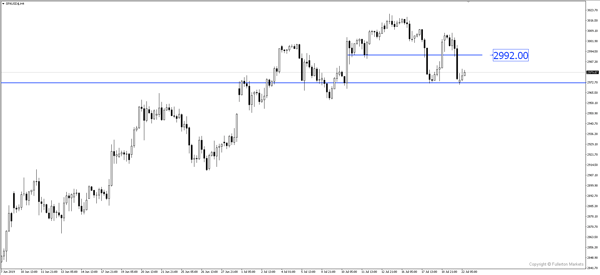The divergence in monetary policy between ECB and RBNZ will widen as ECB is expected to set the stage for a September rate cut and resumption of QE. EUR/NZD could dive further.
Odds of a rate cut by ECB rose above the 50% threshold for the first time
Market is expecting ECB to cut their rates from -0.4%, which is already a record low, to -0.5% in September. ECB, similar to their central bank peers, are under pressure to ease monetary policy to keep inflation expectations from collapsing amid slowing global growth, increased trade protectionism and weak economic data.
For ECB, low inflation and slower eurozone growth are the main problems on hand. The bond markets have staged a powerful rally after ECB announced further easing measures to counter the pressing issues.
However, market could be disappointed as Draghi may not be as dovish as what the market perceives. This is due to eurozone growth and inflation data not being as low as what is expected. Data has improved since the previous ECB meeting and if the trends continue, ECB may not have to be as forceful in their easing and stimulus approach.
Consumer-price growth, also known as inflation, averaged at 1.2%, below ECB’s target of “below but close to 2%” goal. This is definitely far from the target of 2% but most of its peers are either under-performing or have lowered inflation forecast just to meet the target.
On the other hand, eurozone composite PMIs which are seen as a strong indicator of GDP growth, have improved though it’s hard to forecast whether the trend could continue. Manufacturing PMI was the only one stuck in negative territory due to increased trade and Brexit uncertainty and there will be concerns whether the weakness will spill over to a broader economy.
Investors should not only wait for confirmation of rate cuts by Draghi but also ECB plans on reintroducing qualitative easing (QE). The current negative interest rates are already hurting the banks, thus a further 10bps cut may require mitigation measures such as exemptions for some deposits. Besides, a 10bps cut may not be enough to get inflation back on track given that interest rates are already in negative territory.
If Draghi keeps rates unchanged this week, his forward guidance will be the main focus as he is widely expected to lower ECB’s projection rate and confirm a rate cut in September. Euro could continue to weaken until the ECB’s monetary policy meeting, but we may expect a knee-jerk reaction for a rebound in the short term if rates remain unchanged.
EUR/NZD could get hit the worst as RBNZ is expected to keep rates unchanged until further slowdown in data show otherwise. With New Zealand inflation expectations expected to stabilise around the 2% midpoint, this could mean that RBNZ could keep rates unchanged until the end of 2019.
This will cause a divergence between ECB and RBNZ, causing EUR/NZD to fall to 1.6340 which is a March 2019 low.
Our Picks
EUR/NZD – Slightly bearish.
This pair could fall towards the 1.6340 price level if ECB were to confirm a September rate cut.

USD/JPY – Slightly bullish.
This pair may rise towards 108.4 as funds flow out of euro into dollar due to expectations of a dovish ECB.

XAU/USD (Gold) – Slightly bullish.
We expect price to rise towards 1438 this week after price broke a key resistance of 1424.

SPX/USD (S&P 500) – Slightly bullish.
Index may rise towards 2992 this week as price is approaching a support.

Fullerton Markets Research Team
Your Committed Trading Partner















